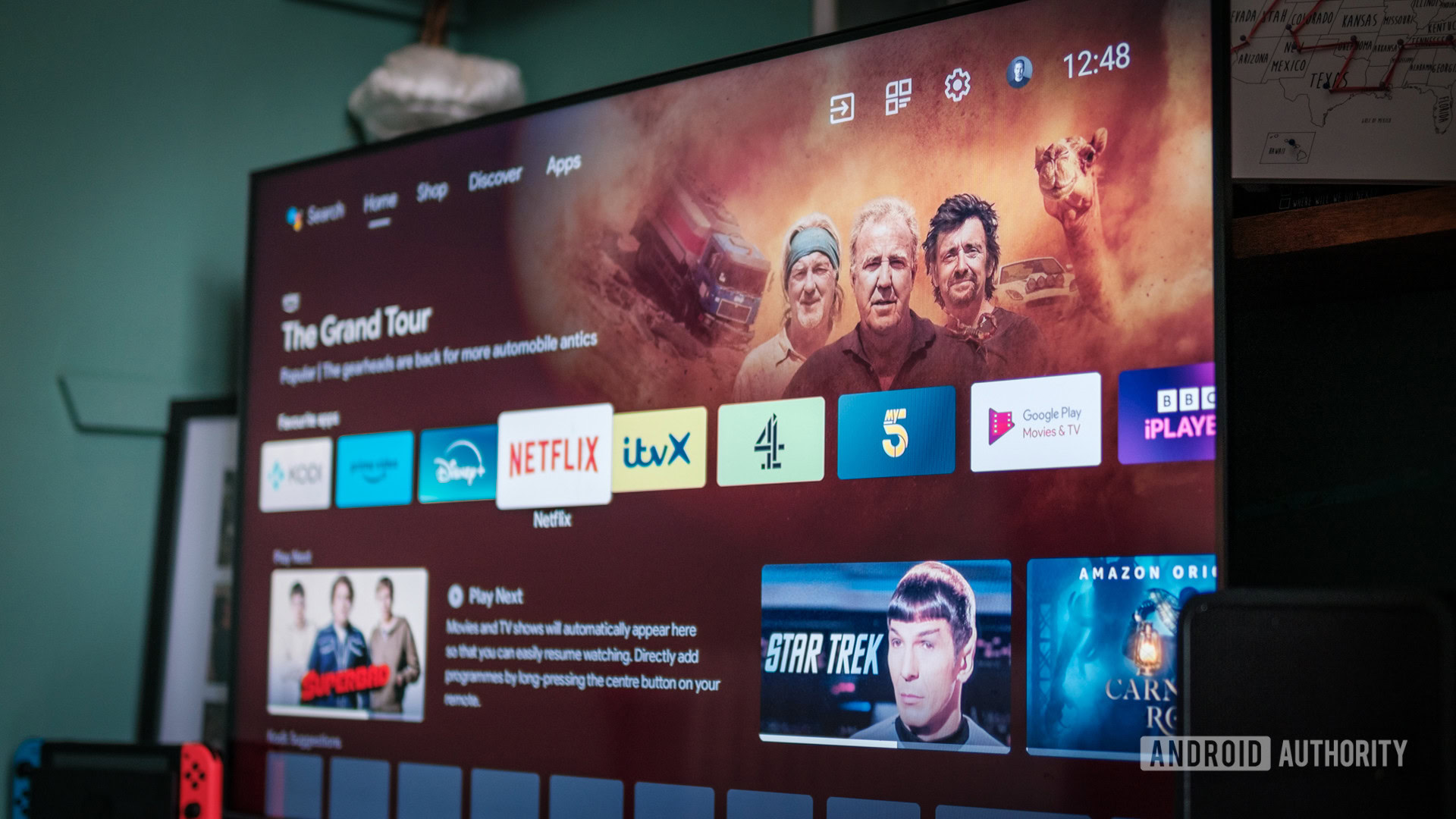TL;DR
- Google TV is finally adding support for picture-in-picture mode, which puts app content in a tiny window overlaying the screen, in Android 14 for TV.
- Picture-in-picture mode has been supported on phones since Android 8.0 was released nearly seven years ago.
- However, picture-in-picture on Google TV won’t be enabled for media content.
Most smartphone screens aren’t big enough to comfortably show two full apps side-by-side simultaneously, which can be a problem when you’re trying to do some work while watching an educational video or livestream. That’s where picture-in-picture (PiP) mode comes in. PiP was introduced in Android 8.0 and lets you watch a video in a tiny window overlaid on top of other apps. Though PiP has been part of the Android platform for nearly seven years now, it hasn’t been supported on some flavors of Android, particularly Google TV. That’s set to change with the upcoming Android 14 for TV update, though.
Google TV, if you aren’t aware, is based on Android TV OS, a version of AOSP designed for televisions. Since Android TV OS is based on AOSP, it has many of the same features. However, some base Android features are removed from Android TV or rather aren’t required to be included. Picture-in-picture is one example of an Android feature that isn’t required to be enabled on Android TV OS devices. Although a few Android TV devices, like the 2019 NVIDIA Shield TV Pro and the 2020 Sony X900H, support PiP, many of the best Android TV boxes don’t.
Android TV devices tend to have low amounts of RAM, which is a problem for multitasking features like PiP. As a result, Android TV makers usually just disable PiP in their software builds because it might not work well. While the decision to enable PiP on Android TV OS devices is left up to OEMs, they don’t even have the option to enable it on Google TV devices. That’s because, according to Google, PiP support was “not supported at all on Google TV prior to Android 13.” With the upcoming update to Android 14 for TV, however, Google TV devices will finally support picture-in-picture mode, though there are a few caveats.
The first caveat is that PiP mode might not be available on every Google TV device running Android 14 for TV. The reason for this is the same reason why the feature isn’t widely available on Android TV devices: memory. Google says that PiP is enabled “on select devices that meet [their] hardware compatibility criteria,” though they didn’t elaborate on what that criteria is. Developers of Android TV apps will need to query a package manager flag to see whether PiP support is enabled on a particular device.
The second caveat is that Google won’t allow media content to be shown in a picture-in-picture window, a major departure from how the feature is used on mobile devices. This means you won’t be able to, say, keep a YouTube video open while browsing for another video to play. So what will you be able to do with PiP on Google TV? Here are the four categories of content Google will approve for picture-in-picture mode on TV:
- Communications use cases, such as video or voice calls.
- Smart home integrations, such as connected doorbells or baby monitors.
- Health use cases, such as fitness tracking or health monitoring.
- Ticker use cases, such as live sports scores or news and stock tickers.
Apps for Android TV have to explicitly declare the categories that correspond to their intended usage of PiP mode. This declaration has to be added to the apps’ manifest files, giving Google an easy way to audit them.
While it’s a bit of a bummer that Google is restricting what apps can use PiP for on Android TV, it makes some sense. Google wants PiP activities to enhance or complement the experience of another fullscreen activity. Apps that want to support PiP mode on Android TV have to adhere to some basic TV app quality guidelines, a lot of which make sense. The guidelines include restrictions on apps not being allowed to display promo materials or ads using PiP windows, not being allowed to use excessive resources or take over audio focus when in PiP mode, and not being able to automatically enter PiP mode without explicit action from the user, among other things.
Because of the inconsistent availability of PiP on Android TV thus far, many apps built for the platform don’t even bother to support the mode. Hopefully, with the introduction of PiP as an officially supported Android TV platform feature, more apps will add support for it. Had Google not decided to skip Android 13 for TV last year, we could’ve had this feature a full year earlier, but it’s better late than never. Developers who are interested in adding PiP support in their Android TV apps should take a look at Google’s documentation, as there are a couple of PiP-related features (like the keep-clear APIs and the ability to set a title and subtitle) that are specific to TVs.
You might like

Laura Adams is a tech enthusiast residing in the UK. Her articles cover the latest technological innovations, from AI to consumer gadgets, providing readers with a glimpse into the future of technology.








